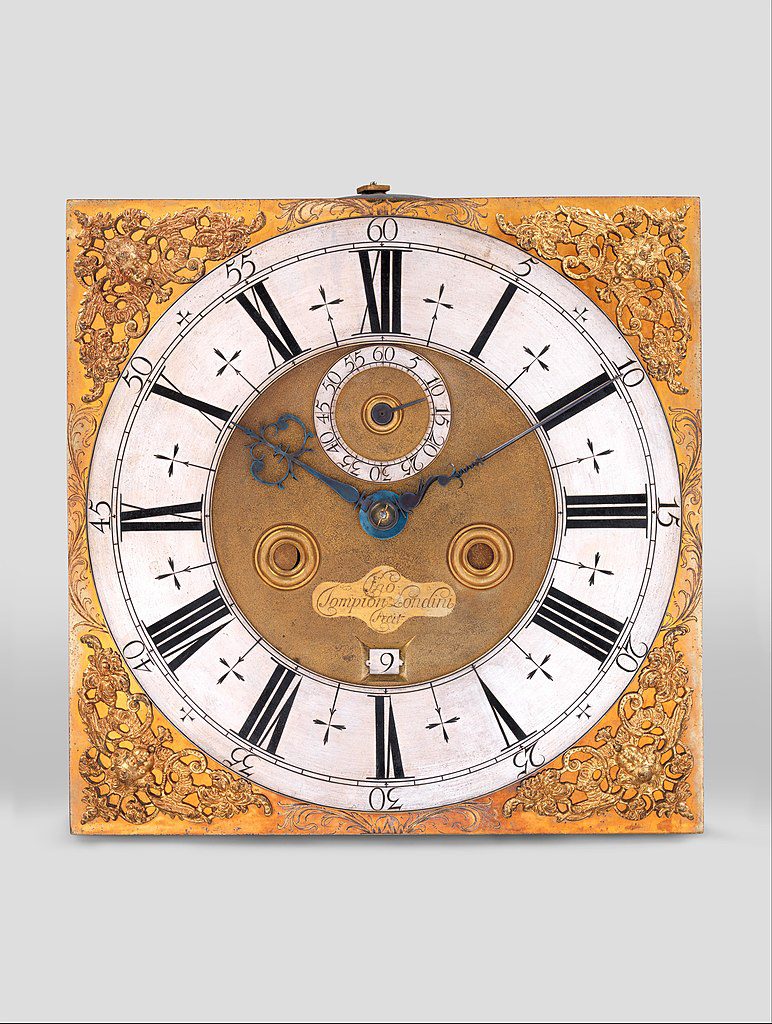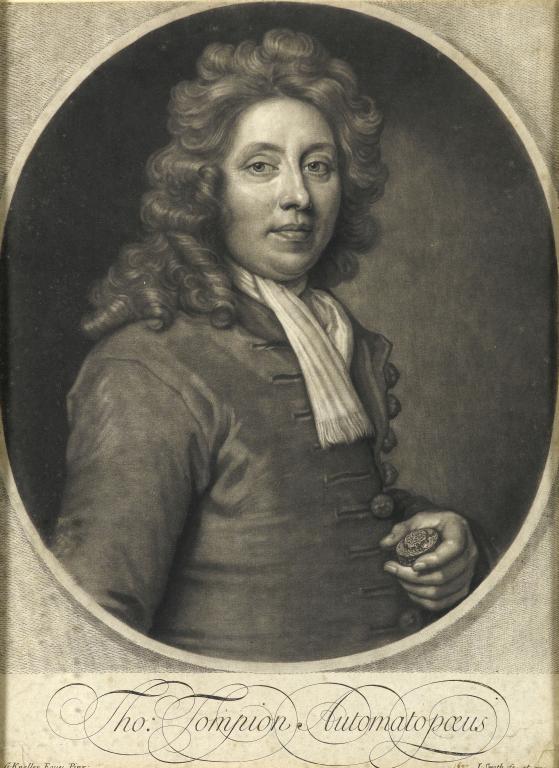On July 25, 1639, English clock maker, watchmaker and mechanician Thomas Tompion was baptized. He is still regarded to this day as the Father of English Clockmaking. Tompion’s work includes some of the most historic and important clocks and watches in the World.
The Son of a Blacksmith
Thomas Tompion was born in Northill, Bedfordshire, England, the son of a blacksmith and became an an apprentice of a London clockmaker around 1664.Very little of his earlier years is known. The first reference to Tompion in London is recorded around 1670 in Water Lane (now Whitefriars Street), far from Fleet Street. His style of construction is strongly connected to Joseph Knibb. This is interesting since Tompion’s first regular client was scientist Robert Hooke [3] who may have known Knibb’s family well, since both were at Oxford. The relationship between Hooke and Tompion was the key to his success, as it opened the doors to his Royal clientele and gave him access to the latest technology. Tompion became famous for his work because of his designs and high product quality. He was an early member of the Clockmakers’ Company of London and became a master in 1704.

Thomas Tompion, Longcase clock with calendar, c. 1700
A Reputation unrivaled anywhere in the World
Thompson’s excellence was based on the sound design of his products, as well as the quality of the materials used. this, combined with the skills of the craftsman he hired, gave him a reputation unrivalled anywhere in the world. Tompion made some of the first watches with balance springs which is probably due to his good relationship with Robert Hooke. The watches had a great potential to work much more accurately and were made for instance for King Charles II, signed with “Robert Hooke invent. 1658. T. Tompion fecit, 1675“. Another form of spring arrangement used by Tompion was a plain spiral with a single balance, similar to the arrangement used by Huygens and Thuret. Tompion’s improved design became the standard pattern in English watches throughout the 17th and 18th centuries.
Tompion’s special achievements include:
- The invention of the Sautrog escapement, which was further developed into a cylinder escapement by George Graham in 1720.
- The introduction of the rake striking mechanism, invented by the London watchmaker and clergyman Edward Barlow (1636-1716) and improved by Daniel Quare,[4] which made striking repetition possible for the first time.
- Floor standing clocks indicating the equation of time, so-called equation clocks (probably inspired by Christiaan Huygens).
Later Years
Tompion became England’s most famous watchmaker and in his workshop, more than 5000 watches and 650 clocks were made and he created a numbering system for his spring and long-case clocks which is thought to be the first time that a serial numbering system was applied to manufactured goods. Tompion, who most likely remained single, had several unusually skilled watchmakers in his family circle. One of them was his nephew Thomas Tompion junior (watchmaker apprenticeship with Charles Kemp), son of his brother James. His sister Elizabeth married George Graham, who had entered Tompion’s business and later became a partner. Tompion’s niece Margaret, daughter of his sister Margaret Kent, married the watchmaker Edward Banger. They all worked at times in alternate jobs. Thomas Tompion died on 20 November 1713 and was buried in Westminster Abbey.
Donna Caroll, A brief History of the Calendar and Time Keeping, [8]
References and Further Reading:
- [1] Thomas Tompion at the British Museum
- [2] Thomas Tompion at Britannica
- [3] Robert Hooke and his Famous Observations of the Micrographia, SciHi Blog
- [4] Daniel Quare and the Repeating Watch Movement, SciHi Blog
- [5] Emma Louisa Radford, Tompion, Thomas, Dictionary of National Biography, 1885-1900, Volume 57.
- [6] Symonds, R.W. (1951). Thomas Tompion: His Life and Work 1639–1713. London: Batsford.
- [7] Thomas Tampion at Wikidata
- [8] Donna Caroll, A brief History of the Calendar and Time Keeping, School of Business and Economics @ youtube
- [9] Timeline of Clockmakers, via Wikidata and DBpedia






